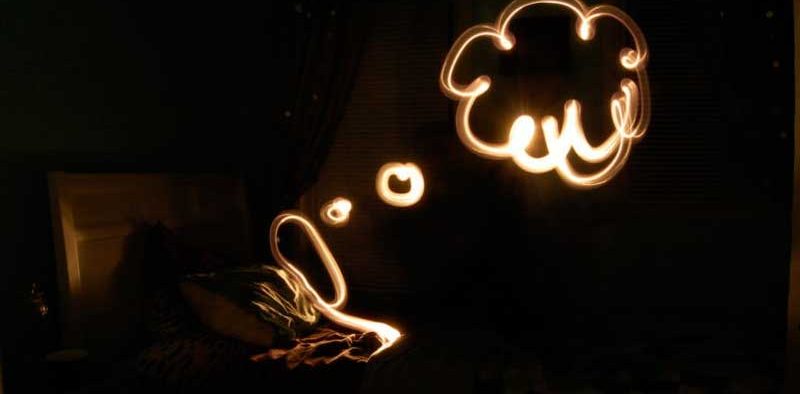Dream Poetry..An Old but NEW type of poetry

DREAM POETRY: ORIGIN, EVOLUTION AND CONTEMPORARY SITUATION
In the Medieval age, dream poetry or dream vision was an appreciated form that permitted writers to compose about unknown worlds. A literary device turned genre, it is often defined as a ‘dream or vision in which some insight or truth is revealed to the writer in his subconscious state’. As a result of not being constrained by the rules of space and time, this form was employed for a multitude of purposes. Dream visions were utilized for social critique, advisory literature, consolation, recounting mystical experiences, feminist diatribes, etc. The origin and development of the dream vision are discussed below.
Origin
It originated in the early Medieval era and continued until the end of the middle ages. During that time, the dream vision always seemed to have a divine foundation. The structure began with the narrator describing his experience of falling asleep, having the dream and then waking up, resolute to note the dream in the form of a poem. The dream was frequently an allegory and depicted creative sceneries existing due to the dream state. This genre was utilized in European literature until the late 15th century.
Development
Over the years, the dream vision developed from having a divine association to a deep, psychological foundation or utilized for political and ideological means. Poems such as ‘The Dream of the Rood’ and ‘Pearl’ are religious in nature, exploring facets of Christianity and spirituality. Pearl mentions ‘grief’ and ‘loss’.
The narrator is searching for a lost pearl in a garden. He falls asleep and enters a realm with his deceased two-year-old daughter as his guide. This dream is a divine experience as well as prophetic and enigmatic. The Dream of the Rood depicts the dream in which the tree of glory is bedazzled with jewels. The tree reveals that it was cut down to make the cross on which Christ was crucified. Therefore, many early dream visions were seen from a religious aspect.
Evolution
During the 14th and 15th centuries, the theme shifted to political and feminist agendas. Thomas Hoccleve wrote The Regiment of the Princes to be an advisory literature to counsel about upright governance. While, The Book of the City of Ladies depicts the writer (Christine de Pizan) falling asleep and waking up to meet three virtuous figures–Reason, Rectitude and Justice, who inform her that she was chosen to help women get their rights and remain protected.
During the 19th century, dream visions reemerged and became a significant aspect of Romantic poetry. S.T. Coleridge had an opium-influenced dream in which he portrayed the magnificent architecture of Kubla Khan’s palace. But, in the poem (Kubla Khan), he depicts more than just beautiful scenery. With the help of alliterations, metaphors, similes and personification, he shows a violent and aggressive picture of nature.
Due to the detailed descriptions of the grounds and palace mixed with the imaginary sites and characters, it is difficult to comprehend whether the poet is the conscious or subconscious state. The poem is an embodiment of man’s interaction with nature or the association of the natural with the supernatural; aspects of creativity and imagination are also painted here and there.
Another Romantic poem that utilizes the dream vision is The Triumph of Life by P.B. Shelley. In this, he lays emphasis on the nature of being and reality. Similar to the medieval works, the poet is in a dream-like state accompanied by a guide. Here, it is Rousseau, who influenced the progress of the Age of Reason. He is portrayed as blind therefore the more negative aspects of life are depicted in this poem.
ALSO READ THIS POEM!
Rousseau also explains that his current state is due to his undisciplined heart and his inability to work for the betterment of humanity; it was due to this that he is in a state of self-destruction. He gives Shelley insight about life and how it corrupts and prevails over the spirit. With the help of imagery, metaphors and personification, Shelley illustrates passion, creativity, nature and imagination.
Conclusion
Conclusively, the dream vision was used in the Medieval Era and continued to influence poets during the 19th century. From Pearl to Kubla Khan, all dream visions share certain attributes i.e. a prologue explaining how the dream came into being, a spiritual guide, an insight to the dreamer’s problems, etc. Each poem gives readers an awareness of the poet’s hidden dilemma and thereby helps the readers to use the judgement in their own concerns and lives. Also, the dream vision enhanced the literary devices in the poem, so that the reader feels involved and present while reading the poem; it makes the readers feel as if they were experiencing the dream themselves.
Currently, I am a student of Fatima Jinnah Women University. With a burning passion for psychology, words, and dreams, I decided to abandon medical studies for humanities. These days, when I’m not listening to ballads, watching movies, or sitting down with a good novel, I am rigorously studying Hangul (Korean language) to satisfy my obsession for BTS and K dramas. I’m a thinking introvert and INFJ personality. Therefore, I like ‘me time’. My articles typically resonate with psychological well-being advice.









